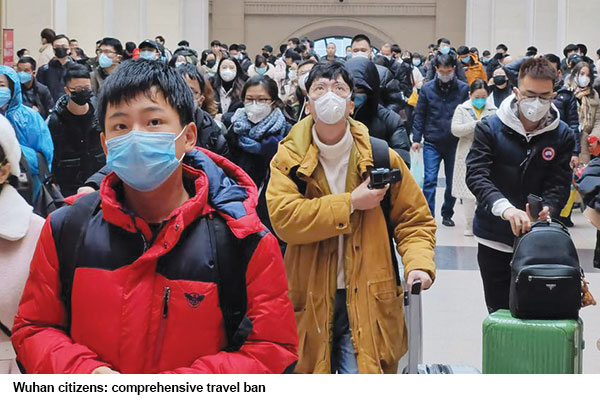 It is a scary time to be ill in Wuhan. The city has one-third of all confirmed infections by the coronavirus and three-quarters of the deaths caused by it. People there are barred from travelling elsewhere (similar rules apply across Hubei, a Syria-sized province of which Wuhan is the capital). Since late January, military medics have been piling into the city. Soldiers are helping enforce its cordons. The army’s growing presence reassures many people, says a resident. But some find it unnerving.
It is a scary time to be ill in Wuhan. The city has one-third of all confirmed infections by the coronavirus and three-quarters of the deaths caused by it. People there are barred from travelling elsewhere (similar rules apply across Hubei, a Syria-sized province of which Wuhan is the capital). Since late January, military medics have been piling into the city. Soldiers are helping enforce its cordons. The army’s growing presence reassures many people, says a resident. But some find it unnerving.
The government has spent lavishly on infrastructure, but its investment in healthcare has failed to keep up. China says it has about 2.6 doctors for every 1,000 people (cf. India’s 0.7). But the World Health Organisation says half of China’s doctors don’t have a bachelor’s degree. Among those in villages and small towns, only 10-15 percent do.
Some practise traditional Chinese medicine, a form of treatment that has government approval but little scientific basis (stocks of an oral liquid based on such medicine have been flying off shelves since a recent report by Xinhua, an official news agency, claimed that it can “suppress” the virus). There is also an acute shortage of nurses. The average in rich countries is three per doctor. In China it is only one.
China’s investment in healthcare has mostly gone to big hospitals in cities. Wuhan has about half of Hubei’s best medical facilities, but only about one-fifth of the province’s population. As in India, far less attention has been paid to primary health clinics, which in more developed systems handle minor ailments and escalate the rest to specialists.
Only about 5 percent of China’s registered doctors serve as general practitioners. The average in the OECD, a club mostly of rich countries, is 23 percent. After Wuhan imposed a lockdown in late January, panicky residents converged on large hospitals seeking reassurance. The queues would have promoted cross-infection, says Xi Chen of Yale University.
Public anger about healthcare, including the gouging of patients by hospitals, has triggered occasional violence against doctors. In late January, a man attacked medical staff in Wuhan after his father-in-law died from the virus. But the system’s public image may have improved during the current crisis. Many people praise doctors’ willingness to join the fight in Hubei, despite high rates of infection among medical workers there. They will need such support in the struggle ahead.























